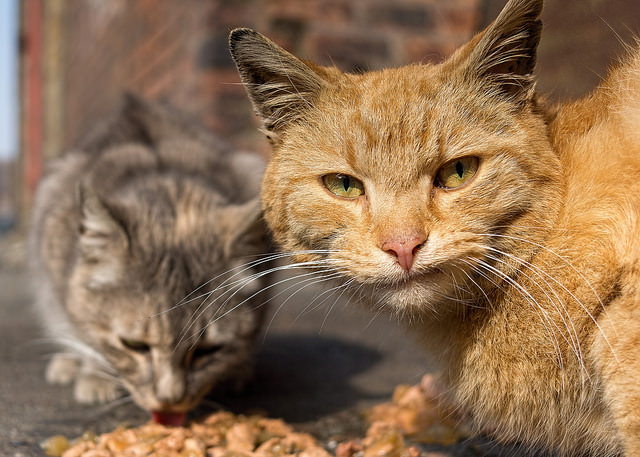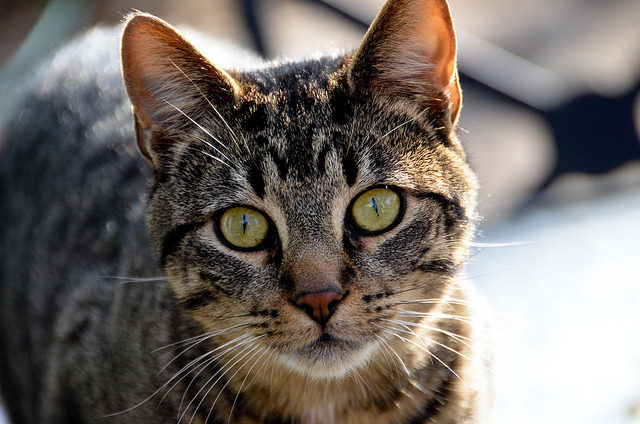October 16th is National Feral Cat Day according to Alley Cat Allies. “Feral” is a term that often gets used to describe all cats who live outdoors, but the truth is that there is a large difference between feral and stray cats. Strays have been socialized to some extent, whereas feral cats never learned to trust humans. For this reason, feral cats often get a bad rap. Their anti-social behavior and fundamental need to scavenge and fend for themselves has characterized them as a nuisance to a large portion of society. At the end of the day though, feral cats are just cats who have had disadvantaged lives. There are some simple things we can do to make their lives healthier and happier while also respecting their wild natures.

Image Source: Takashi Hososhima via Flickr.com
#1 – Trap, Neuter, Return
Trap, Neuter, Return (TNR) groups trap, neuter, and return feral cats to their established territories. This keeps them comfortable and secure in their environments while curbing future litters. Many groups are also able to provide cats with vaccinations and basic health exams. Volunteers are often assigned to specific feral colonies in their communities, which allows them to know each cat’s specific temperament and condition. This relationship allows TNR volunteers to notice and act on new health concerns.
TNR groups are active in many communities around the country and there may be one in yours! If you have the time, getting involved in TNR work is a great way to help the feral cats in your own neighborhood. Even if you can’t get so deeply involved, getting in touch with your local TNR group can help the cats in your neighborhood get the care and attention they need and deserve.

Image Source: Beverley Goodwin via Flickr.com
#2 – Provide Food
Providing food is one of the simplest things you can do to help care for the feral cats in your neighborhood, but it is also one of the most effective. Whether you’re feeding them wet or dry food, dependable feedings can help them stress less about where they will find their next meals.

Image Source: iris via Flickr.com
#3 – Provide Fresh Water
As you can imagine, it’s not easy for feral cats to find access to fresh water. Many end up drinking out of puddles or other stagnant pools of water, which can be filled with bacteria, parasites, and contaminants like motor oil. Keep a bowl of fresh water outside to keep your local kitties hydrated.

Image Source: Quinn Dombrowski via Flickr.com
#4 – Watch for Medical Problems
Once the feral cats know that you will consistently provide food and water, they will start coming around more often. This will give you the unique position of getting acquainted with them, though from afar. Watch out for changes to their personalities and health and contact your local TNR group if you see a problem. It can be tricky to capture a feral cat and TNR volunteers will be very familiar with the most effective methods. Many TNR groups also work closely with veterinarians who will give them price breaks for the feral cats they work with.
#5 – Provide Shelter
Exposure to the elements can make the life of a feral cat significantly more miserable and dangerous, especially in the most extreme parts of summer and winter. Check out Alley Cat Allies’ Cat Shelter Options Gallery for some great ideas for purchasing or building shelters for your neighborhood feral cats.

